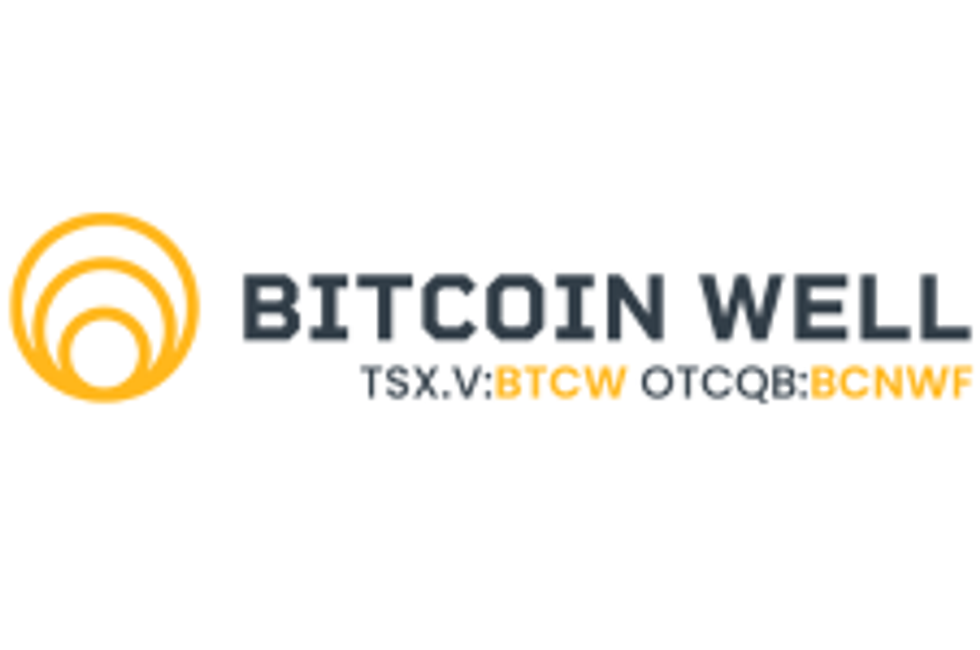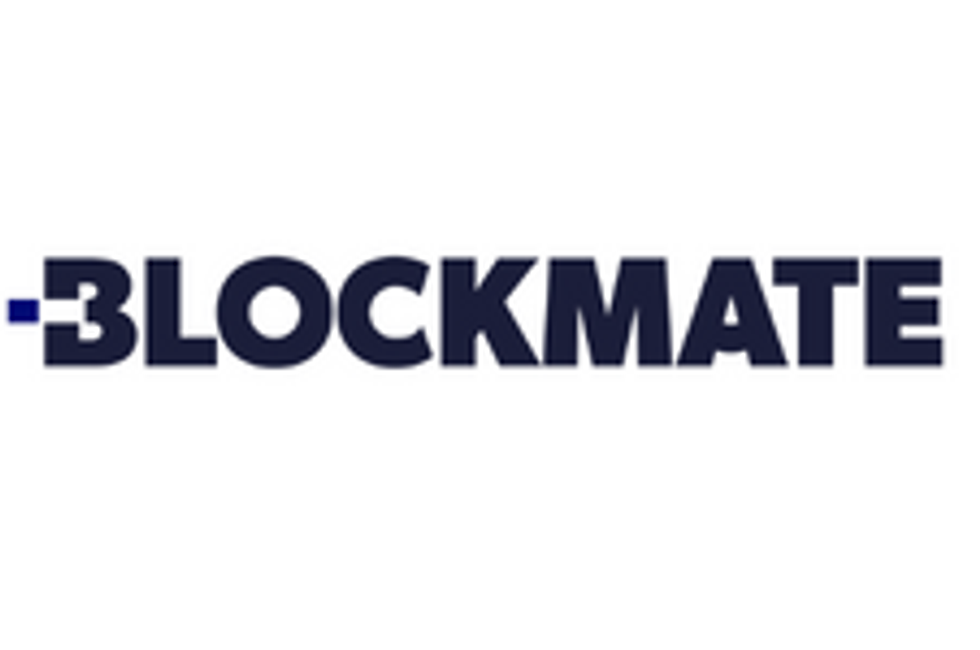- AustraliaNorth AmericaWorld
Investing News NetworkYour trusted source for investing success
Trident Royalties PLC
Impact Minerals Limited
Ramp Metals
Purpose Bitcoin ETF
- Lithium Outlook
- Oil and Gas Outlook
- Gold Outlook Report
- Uranium Outlook
- Rare Earths Outlook
- All Outlook Reports
- Top Generative AI Stocks
- Top EV Stocks
- Biggest AI Companies
- Biggest Blockchain Stocks
- Biggest Cryptocurrency-mining Stocks
- Biggest Cybersecurity Companies
- Biggest Robotics Companies
- Biggest Social Media Companies
- Biggest Technology ETFs
- Artificial Intellgience ETFs
- Robotics ETFs
- Canadian Cryptocurrency ETFs
- Artificial Intelligence Outlook
- EV Outlook
- Cleantech Outlook
- Crypto Outlook
- Tech Outlook
- All Market Outlook Reports
- Cannabis Weekly Round-Up
- Top Alzheimer's Treatment Stocks
- Top Biotech Stocks
- Top Plant-based Food Stocks
- Biggest Cannabis Stocks
- Biggest Pharma Stocks
- Longevity Stocks to Watch
- Psychedelics Stocks to Watch
- Top Cobalt Stocks
- Small Biotech ETFs to Watch
- Top Life Science ETFs
- Biggest Pharmaceutical ETFs
- Life Science Outlook
- Biotech Outlook
- Cannabis Outlook
- Pharma Outlook
- Psychedelics Outlook
- All Market Outlook Reports
Veridium Labs to Bring Liquidity to the Natural Capital Market Through Blockchain

The Investing News Network recently had the opportunity to speak with Todd Lemons, the co-founder of Veridium Labs, about the company’s upcoming token sale.
If it seems like blockchain has dominated the year 2017–that’s because it has–and Veridium Labs is just one of the latest companies to adapt this new wave of technology.
Case in point, the company will look to use blockchain technology to bring liquidity to the natural capital market. Through this, the company’s Veridium Network will create digital records over blockchain of the exact square meters of natural capital used. In short, Veridium Labs looks “to create an entirely new asset class of commodities with net positive environmental impacts. ”
The platform will include a range of environmental asset tokens, such as the REDD+ Credits, that may be tokenized and on-boarded to the blockchain via the Veridium Network. The first issued tokens will be TGRs, and are backed by Triple Gold REDD+ “as the underlying Natural Capital asset.”
With the company’s token launch slated for Q4 2017, the Investing News Network (INN) had the opportunity to speak with Todd Lemons, the co-founder of Veridium Labs. In our interview, Lemons discusses how the company got to this point, how their platform will be revolutionary, how the Veridium Network differs from other environmental tokens, what kind of response the company has had in advance of the token sale, and what excites Veridum about the future.
To find out more of what Lemons had to say, you can read the interview below. It has been edited for clarity and brevity.
INN: How did the company come about the idea of using blockchain technology to bring liquidity to the capital market?
TL: It’s actually a 25 year journey, but I’ll keep it short. We have been in the business of creating market-based solutions for environmental problems for over 25 years. And that’s been an evolutionary process. The last step before Veridium was to create these REDD+ credits. So we have a company called Infinite Earth, which really gave birth to the first, what’s called REDD+ credits. [They] are essentially earning carbon emission credits from avoided deforestation. That’s a mechanism that’s now recognized and embodied in the Paris agreement and we were the authors of that first methodology. It’s really a way of using the … carbon markets to create revenues for forest conservation, so it’s a really interesting approach to a for-profit forest conservation mechanism.
That was a really big step in the first direction. At our core, everything we are doing is trying to say “we have the natural capital assets, which are basically standing forest.” They have all these incredible value components that most of us agree, we looked at a biodiverse tropical forest that might be a habitat for many endangered species, and we say that’s super valuable. But, in fact it doesn’t have that much value until it’s cut down and turned into timber, or converted to something else like a palm oil plantation. For all these years, we’ve been trying to find mechanisms to give what we think a standing natural forest … the sum of its parts should be worth more than the individual parts, but that’s not the case.
Anecdotally or philosophically, we say it’s very valuable. But, in default if something doesn’t actually have a price tag it isn’t treated as valuable. So, we’re trying to give a price to this natural capital. We’ve tried lots of different ways and we’ve had incremental successes. What it always comes down to is that it doesn’t have a price and it doesn’t have liquidity. When an asset is bound up by ill-liquidity, it tends to be devalued.
INN: This is quite an innovative step in this industry–how will this revolutionize it for the future?
TL: It’s really a two part process. One is that natural cap itself has to have a price and it has to have liquidity around it. By on-boarding it to the blockchain, we begin to create both. We certainly give it a more transparent price. We use the blockchain market to create some liquidity. The second step is that there’s a lot of discussion and angst in the market place around sustainable supply chains.
As consumers, we recognize that the products we consume do have adverse environmental impacts. Institutional investors realise that the company’s they’re investing in, their supply chains have these adverse impacts. Everyone recognizes that’s unsustainable. That represents not only a risk to just the planet in general, but it really represents a risk to shareholder value.
Whether it’s stigmatization–just the bad brand association with environmental impacts–or whether it’s stranded assets, meaning that as awareness arises, that tends to lead to regulations, which could then have tangible and measurable impacts to a company’s profitability. Therefore it’s ultimately long-term shareholder value.
You can shorten supply lines and logistically save on energy, but the far bigger impacts that supply chains have are the effects they have on the environment.
If you’re a fast moving consumer goods company making candy bars that there’s an underlying impact from the cocoa, the sugar, and the palm oil, those all replaced biodiverse forests. So they had very broad impacts that go beyond just the carbon emissions from that, but also to biodiversity loss, so water conservation loss, etc.
It’s not so much a lack of will. A lot of people assume there’s a lack of will, but in fact there’s just a lack of tools. When we sit down with these companies and try to address these impacts, they say “okay, great, you are providing these environmental mitigation credits, you are conserving the same units that we are impacting, so if we were to buy these conservation units to match to our environmental impacts within our supply chains, how does that all work? We’re buying cocoa in Africa, and palm oil in Indonesia, and sugar in Brazil and it’s all going to a factory in New Jersey and you’re talking about five different subsidiaries, five different balance sheets, how do we really match these environmental replacement credits with the actual impacts in such a complex supply chain?”
That always has been the barrier. Obviously, blockchain can facilitate all of that. We can take all of these disparate commodities and their underlying environmental impacts, we can match them with environmental replacement credits like the ones that we produce from our reserve, all of which is independently verified and measured.
But the important thing is, blockchain facilitates the linking of those and follows those through a very complex supply chain. Even to the point of following it to a specific candy bar on the grocery store shelf, and eventually, to weed that into consumer loyalty and brand awareness programs.
Only by addressing the full value chain, are we actually going to be able to create truly sustainable supply chains? Otherwise it’s anecdotal like it is today.
INN: There’s a lot of uncertainty regarding blockchain and cryptocurrencies. Pair that with the uncertainty of a Donald Trump presidency as it relates to cleantech and the Paris Accord Agreement, how do you sell the product if people are unsure?
TL: Well, I think the uncertainty is normal for any new industry. The way you mitigate that uncertainty is that you create something real. We are taking tangible environmental assets and we’re tokenizing them not just because it’s the latest craze, but because the underlying technology allows us to do things we couldn’t do before. I think if you can create real products and solutions, then we can all begin to move blockchain technology and the industry into that natural second stage of where the market will sort out what’s real and what’s not real.
Out of this I think, comes blockchain 2.0, which is where we begin to solve real world problems with the underlying technology, which is very real and extremely useful.
INN: Environmental credits are already being traded, can you describe how the Veridium Network will differ?
TL: Largely, other than government allowances, and so on, most of the high quality environmental mitigation credits like forestry conservation credits, they’re traded over the counter. So their weakness is that they don’t have a transparent pricing mechanism. That means that makes it very tough–especially for publicly traded companies–to put them on the books, because they can’t be market to market. So, right away the pricing mechanism and the liquidity makes those more attractive.
Veridium plans on bringing in a whole host of members, essentially. We’re looking at Veridium as a true market place of companies that provide potentially different pieces of the solution.
What we see this eventually becoming is a community of collaborators across the entire value chain that allows us to take a total solution to a Fortune 500 company and we can provide the tokenized environmental mitigation credits, we can leverage members who are already experts and supply chain management with the existing tools that they have. Ultimately, this has to be believed deeply in the DNA of a company and its brand, and its message and communications to its consumers. We have to have this solution that can really address the entire value chain. When we try to address pieces of it it hasn’t worked.
INN: Now the company hopes to raise $100 million by October by selling two types of tokens. Can you describe what the tokens are?
TL: The majority of that is unlike many blockchain token sales. There’ a real cost of goods in this one. There’s an asset behind it. Really what this is is a first product offering. We are selling these TGRs which is the highest quality environmental mitigation credit that we believe available. That’s the TGR token. As a reward for participating in the sale of that first token, we are also giving away the Veridium membership token.
Just like any company that is launching a new product line, they may offer special coupons, vouchers, etc., that’s essentially what the two token sale is about. It’s really a one token sale and then in order to reward the participants in that first sale, then we’re offering the Veridium membership token.
After that, like I say, because we view this as a community, and we need community support, that’s the whole purpose of the Veridium token. It’s to recognize that this needs to be an active membership of various participants. We plan on building memberships that way.
INN: What kind of response have you had in advance of the token sale?
TL: We’ve attracted quite a bit of interest in people wanting to participate in that first token sale. We have interest from Fortune 500 companies that we’ve been speaking to for many, many years and really like what we’re doing but haven’t been able to figure out exactly how to digest those environmental credits. They also have confirmed that–yes–this definitely looks like something they could work with more than the conventional credits that we offered before.
I think we’re finding confirmation from various different points of the market that it’s encouraging.
INN: What other goals does the company have for the future?
TL: I think the immediate goal is to start with this first asset. You have to start somewhere. The first one is these TGRs and providing a proof of concept that it’s in tokenized form, we think that’s more digestible. It’s got liquidity, and it has a clear pricing mechanism. Once we do that, then immediately after, our vision has actually grown through this entire process to understand that it’s actually more than just us. It is a whole community of organizations and people who want to do the same thing in different ways and in different markets. They all bring different talents and experience to the table, so we’ve just recently realized that it’s more than just our own group trying to create this thing.
We’re opening it up and looking at it more as a community enterprise and a platform where lots of different existing businesses who already have great track records and providing supply chain solutions to Fortune 500 companies. Others who are big traders in the carbon markets. Others who are natural capital asset providers.
So there’s this whole host of people who have decided they would like to collaborate and be a part of this more vibrant and more well rounded community called Veridium than any of us originally planned. So I think that’s the direction that we’ll start taking, is really make it open source in a way and make it an incredibly broad community of collaborators working towards the same goal and providing different pieces of the solution.
Don’t forget to follow us @INN_Technology for real-time news updates!
Securities Disclosure: I, Jocelyn Aspa, hold no direct investment interest in any company mentioned in this article.
The Investing News Network does not guarantee the accuracy or thoroughness of the information reported in the interviews it conducts. The opinions expressed in these interviews do not reflect the opinions of the Investing News Network and do not constitute investment advice. All readers are encouraged to perform their own due diligence.
Outlook Reports
Featured Blockchain Investing Stocks
Browse Companies
MARKETS
COMMODITIES
| Commodities | |||
|---|---|---|---|
| Gold | 2360.34 | -26.50 | |
| Silver | 27.82 | -0.75 | |
| Copper | 4.53 | 0.00 | |
| Oil | 82.14 | -1.00 | |
| Heating Oil | 2.54 | -0.01 | |
| Natural Gas | 1.73 | -0.02 | |
Investing News Network websites or approved third-party tools use cookies. Please refer to the cookie policy for collected data, privacy and GDPR compliance. By continuing to browse the site, you agree to our use of cookies.

